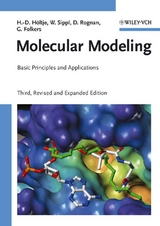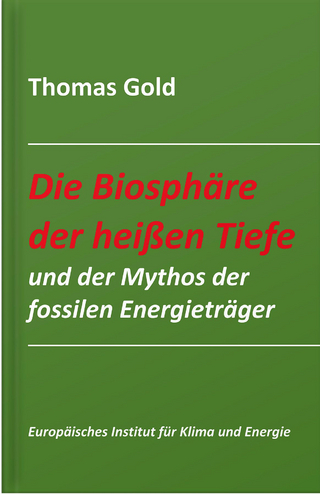Molecular Modeling
Wiley-VCH (Verlag)
978-3-527-31568-0 (ISBN)
Hans-Dieter Höltje is director of the Institute of Pharmaceutical Chemistry at the Heinrich-Heine-Universität Düsseldorf (Germany) where he also holds the chair of Medicinal Chemistry. His main interest is the molecular mechanism of drug action. Wolfgang Sippl is Professor of Pharmaceutical Chemistry at the Martin-Luther-University of Halle-Wittenberg (Germany). He is interested in 3D QSAR, molecular docking and molecular dynamics, and their applications in drug design and pharmacokinetics. Didier Rognan leads the Drug Bioinformatics Group at the Laboratory for Molecular Pharmacochemistry in Illkirch (France). He is mainly interested in all aspects (method development, applications) of protein-based drug design and virtual screening. Gerd Folkers is Professor of Pharmaceutical Chemistry at the ETH Zürich (Switzerland). The focus of his research is the molecular interation between drugs and their binding sites.
Introduction
Small Molecules
- Generation of 3D-Coordinates
- Computational Tools for Geometry Optimization
- Conformational Analysis
- Determination of Molecular Interaction Potentials
- Pharmacophore Identification
- 3D QSAR Methods
A Case Study for Small Molecule Modeling: Dopamine D3 Receptor Antagonists
- Building a Pharmacophore Model
- 3D QSAR Analysis
Introduction to Comparative Protein Modeling
- Where and How to get Information on Proteins
- Terminology and Principles of Protein Structure
- Comparative Protein Modeling
- Optimization Procedures - Model Refinement - Molecular Dynamics
- Validation of Protein Models
- Properties of Proteins
Virtual Screening and Docking
- Preparation of the Partners
- Docking Algorithms
- Scoring Functions
- Postfiltering Virtual Screening Results
- Comparison of Different Docking and Scoring Methods
- Examples of successful Virtual Screening Studies
Scope and Limits of Molecular Docking
- Docking in the Polar Active Site that Contains Water
- Including Cofactor in Docking? (NEW)
- Impact of Tautomerism on Docking (NEW)
Chemogenomic Approaches to Rational Drug Design (NEW)
- Description of Ligand and Target Spaces
- Ligand-based Chemogenomic Approaches
- Targed-based Chemogenomic Approaches
- Target-Ligand Based Chemogenomic Approaches
A Case Study for Protein Modeling: the Nuclear Hormone Receptor CAR as an Example for Comparative Modeling and the Analysis of Protein-Ligand Complexes (NEW)
- The Biochemical and Pharmacological Description of the Problem
- Comparative Modeling of the Human Nuclear Hormone Receptor CAR
- Analysis of the Models that Emerged from MD Simulations
- Analysis of CAR Mutants
- Modeling of CAR-Ligand Complexes
- The CAR X-Ray Structure Comes into Play
- Virtual Screening for Novel CAR Activators
"Beginners as well as experts in the field of biochemistry, molecular biology, and drug development will find this book quite handy and useful. The third edition is justified given the rapid development of hardware and software tools and other advances in the applications of molecular modeling techniques." ( Doody s, April 2009)
"The authors are experienced university lecturers and as a result of their teaching practices the textbook provides teachers with a tried-and-tested learning material. The text is equally valuable to experts" (International Journal of Bioautomation , April 2009)
"An excellent resource as an introduction to molecular modelling techniques ... .I can particularly recommend this book to academics." ( Journal of Medicinal Chemistry , September 2008)
| Erscheint lt. Verlag | 16.1.2008 |
|---|---|
| Sprache | englisch |
| Maße | 170 x 240 mm |
| Gewicht | 615 g |
| Themenwelt | Medizin / Pharmazie ► Pharmazie |
| Naturwissenschaften ► Biologie ► Biochemie | |
| Naturwissenschaften ► Chemie | |
| Schlagworte | Biowissenschaften • Cell & Molecular Biology • Cell & Molecular Biology • Chemie • Chemische Struktur • Chemistry • Computational Chemistry & Molecular Modeling • Computational Chemistry & Molecular Modeling • Computational Chemistry u. Molecular Modeling • Life Sciences • Medizinische Chemie • Molekulare Chemie • Molekülmodell • Molekülsimulation • Pharmaceutical & Medicinal Chemistry • Pharmaceutical & Medicinal Chemistry • Pharmazeutische u. Medizinische Chemie • structural biology • Strukturbiologie • Zell- u. Molekularbiologie |
| ISBN-10 | 3-527-31568-3 / 3527315683 |
| ISBN-13 | 978-3-527-31568-0 / 9783527315680 |
| Zustand | Neuware |
| Informationen gemäß Produktsicherheitsverordnung (GPSR) | |
| Haben Sie eine Frage zum Produkt? |
aus dem Bereich




